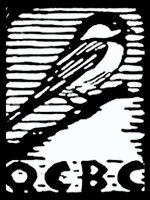In the early days of the Internet, before various websites, NYSbirds, and the networking sites scattered across the World Wide Web, there were the CompuServe Forums. A group of birders “met” on the Birding Forum, where they discussed the burning birding issues of the day and developed what is now known as The Universal Laws of Birding. These laws have been scattered around the Internet, appearing in various guises, and have now been revised, modified for conciseness, or otherwise updated by one of the original creators and contributors.
THE SACRIFICIAL LAMB LAW. On a stake out for a rarity, the bird will only show up after the “sacrificial lamb” needs to use the restroom, get hot chocolate, or has to leave. The “lamb” should be spared the bad news, and instead be presented with a jar of mint jelly. (See YSHBH Constant)
THE SPITEFUL AVOIDANCE LAW. If you don’t see the bird within a certain amount of tries, it becomes insulted and deliberately avoids you from then on, becoming your “Nemesis Bird” or Oiseau de Malheur. (Arie Gilbert)
THE CASUAL INCANTATION LAW. This takes place by the offhand mentioning of a bird and then the bird appears. (Arie Gilbert)
THE COAST IS CLEAR LAW. The birds will only come out after you have begun to leave. Sometimes you can trick the birds into coming out by loudly announcing that you are leaving and starting to move in that direction. (Jim Frazier)
THE RARE BIRD ALERT RAZOR. Never assume the rare bird line has been updated, or that everyone going to see a bird will in turn post a message. Just because the bird has not been reported doesn’t necessarily mean it’s not still there. (Ann Johnson)
THE LAW OF IRONIC ABUNDANCE. You may look for a particular bird for 20 years without finding it, but once you do find it, they will be everywhere and robin-like in their numbers. (Carolyn Hoffman)
THE PHOTOGRAPHIC PARADOX. Your best photographic opportunities occur when you leave your camera behind. (Arie Gilbert)
THE LAW OF INDIRECT OBSERVATION. You will learn more about the variation in Herring Gulls in 30 minutes of looking for a Thayer’s Gull than you will in a lifetime of looking at Herring Gulls. (Jim Bangma)
THE LAW OF AVIAN FIELD MARK MODESTY. Whenever you are without a field guide and cannot ID a bird, the field marks you think are important are not. When you do have a field guide, and there is an important field mark, the bird never lets you see it. (Carolyn Hoffman)
THE LAW OF PROPORTIONAL OBSERVABILITY. If there are two or more birds in a tree and one is a rarity, the only one you can’t see is the rarity. (Bill Elrick)
THE YSHBH CONSTANT. Upon arriving late at the site of a bird reported on the RBA and finding a group of birders already there you will be told “You Should Have Been Here xx minutes ago. The bird just flew.” (Joe DiCostanzo)
THE INVERSE DISTANCE WATERFOWL LAW. The rarer the duck or goose, the further from shore it will be. On an enclosed body of water, it will always be on the diametrically opposite shore from you and this shore will always be private land or otherwise inaccessible. (Joe DiCostanzo)
THE LUCK OF THE DISINTERESTED LAW. At any stakeout for a rare bird at which a large number of birders have assembled, one birder will usually have dragged along an uninterested, non-birding friend or relative. The non-birder almost inevitably will be the one who looks the other way or wanders off and finds the sought after bird. (Joe DiCostanzo)
THE YELLOWLEGS CONSTANT. If a Lesser Yellowlegs and a Greater Yellowlegs are next to each other, someone invariably comments: “There’s a good size comparison.” (Jim Frazier)
THE MATERNAL CONSTANT. Whenever a group of birders finds a cluster of new ducklings, gosling or any other cute and adorable group of young birds, you’ll always hear a chorus of “aaawwwwwhhhhhhhh.” (Jim Frazier)
THE LAW OF AUGMENTED RETURNS. AKA Eric’s Observation: Extremely rare birds are often initially misidentified as common birds, so few birders look at them twice, let alone once. Eventually, someone correctly identifies the bird, opening the flood gates to scores of birders coming to see it.(Eric Miller)
THE LESS IS MORE LAW. When birding in a group someone may stay behind because they are tired etc. Upon return of the group they are informed that most or more birds were seen right from that location.
THE METEOROLOGICAL PARADOX. Whenever the weather is unseasonably nice, the birds you are seeking are also enjoying the good weather. Elsewhere. (Ian Resnick)
THE PATAGONIA PICNIC TABLE EFFECT. The persistence of a rarity at any location leads to more and more rarities being discovered there because of the increased coverage by birders.
THE OUT OF TOWN LAW. Whenever you travel away from your local patch (usually on some exotic, expensive birding trip), the local Rare Bird Report has observation submissions – the entire time you are away – of State Firsts or Seconds, of any number of species. And they all take wing, never to be seen again, one day before your return. (Eileen Schwinn)
